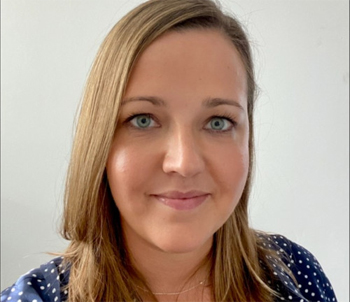The incoming president of the Local Government Technical Advisers Group (LGTAG) has called for a reinvigoration of fence-to-fence asset management within the highways sector.
Emily See (pictured), who is also highways market director at Amey Consulting, has argued that the sector needs to revitalise the asset management agenda while also ensuring that it takes a much wider approach as the norm.
Speaking at the Road Safety Markings Association (RSMA) conference, she said: 'We all quote the £16.3bn backlog, but that is just carriageway and there are lots of other assets out there. There is probably an element where people think it is just for the road but you have bridges, streetlights, gulleys, verges, all the drainage assets; there are forgotten assets like road markings.
'If asset management is implemented properly we will see improved am performance, informed investment decisions, management of risk, enhanced reputations for authorities and there will be improved sustainability.'

Posting on social media Ms See said: 'It's time for us to get back on that asset management journey!'
The asset management revolution in highways started over 20 years ago in 2004 when the first framework for for its application to roads was released.
Since then it took time to gather momentum but was accelerated by the Highways Maintenance Efficiency Programme (HMEP) in 2013, which provided an off-the-shelf template, and the self-assessment incentive fund in 2015, which gave councils a financial incentive to get asset management plans in place.
However, in recent years the self-assessment funding element was dropped by the Department for Transport, which is now looking for a new means of incentivising best practice.
The department said recently that it wants to make sure 'authorities spend the money wisely, collect the right data and deliver proactive maintenance before potholes start to form' and that 25% of a £500m uplift would be 'held back until authorities have shown that they are delivering'.
Ms See suggested that with the benefit of the new PAS 2161 standard for road condition monitoring, which allows new technology to be used, there could be a boom in data but the sector should not just focus on the road surface.
'If your drainage is falling apart, that will have a huge impact on the carriageway so if you are solely focused on the one asset and driving funding that way, it could drive the wrong behaviours and forget about the asset as a whole.
'I am trying to reinvigorate asset management and it’s almost a fence to fence approach and sort of not look at assets in isolation.'
Ms See has won support from a past president of LGTAG, Jon Munslow, who said: 'Emily’s approach to asset management is going to move highways further forward on our asset management journey building on the foundations and progress we have and adding what we need to meet today's challenges of climate resilience, adaptation and funding.'
At the conference, he added: 'Asset management has been focused on the big ticket items what we need to do with is put that same amount of effort and focus on all the other assets because the assets don’t work individually they work as a system for the road user.'
Asset management will be a key theme of the 2025 LGTAG conference in June. Click here for more information and to register.





